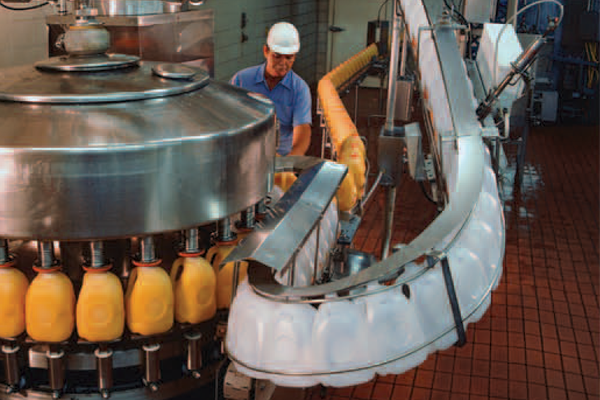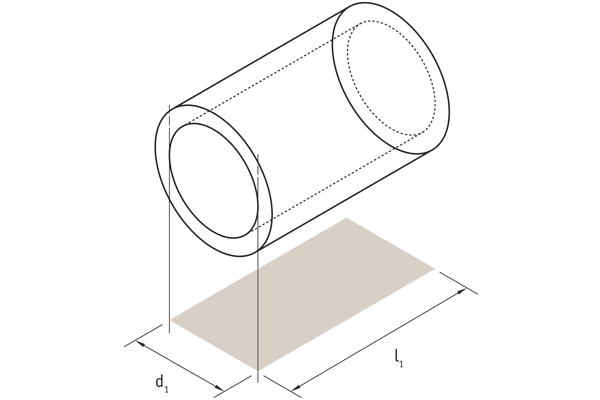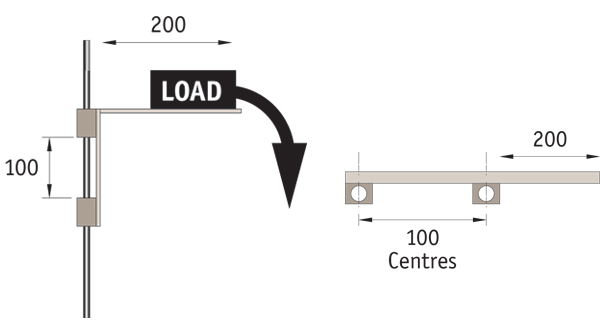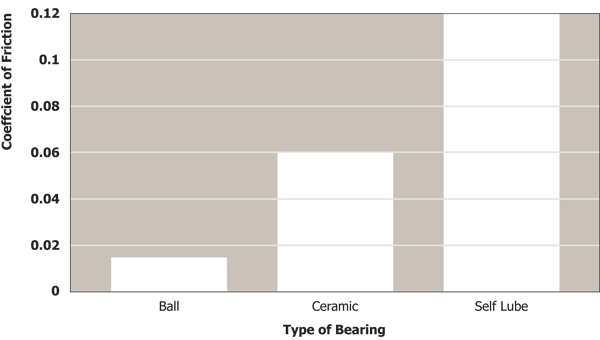Automotion Components Ceramic Linear Bearings
What is...
Material
Self-lubricating
These ceramic coated linear bearings are lined with a self-lubricating composite which is bonded to the aluminium shell. This composite is a combination of Teflon® and non-abrasive, polyamide fillers for both load carrying capability and dynamic coefficient of friction. As the self-liner is non-abrasive, it runs equally well on either hardened steel or on soft steel or stainless steel shafting (303 or 316).
Ceramic coated
Ceramic coated linear bearings are a one piece construction employing a file-hard ceramic coating over an aluminium shell. Our ceramic coating is not an anodised or surface coating that can fracture, flake, chip or wash-off in corrosive environments. The ceramic coating is FDA compliant.
These bearings require lubrication (grease or light oil is sufficient - no silicone based lubricants).

Applications
- Automated assembly.
- Packaging machines.
- Food processing equipment.

- Pharmaceutical equipment.
- Medical equipment.
- Wash-down systems.

Ceramic coated bearings
These are manufactured from a special grade of aluminium, then ceramic coated. Surface hardness is 85HRC, which is why the bearings have extremely long wear life. Their extreme hardness prevents particles from entering into the surface of the shafting, (this is the primary cause of bearing and shaft failure).
The ceramic series must be lubricated with a thin film of oil in order to perform correctly.
- Lasting precision alignment.
- Abrasion resistance.
- Elimination of noise.
- Interchangeable with ball bushings.
- Minimal lubrication is required.
- Design economies.
- Rotary/linear motion capabilities.
- Zero shake or play.
- Elimination of galvanic action.
- High operation speeds.
- Excellent electrical insulating abilities.
- Oscillatory motion & rapid directional change.
- Unaffected by salt water or corrosion.
- Cleanliness.
- Vacuum applications.
- No catastrophic failure.
- Low friction.
- Food machinery (FDA approved materials available).
Self-lubricating bearings
- Tough
- Resource free
- Quiet
- Cost-effective
These are maintenance free bearings manufactured to the same standards as our ceramic coated series, but the inside diameter is lined with a special blended Tefl on-material, eliminating the need for lubrication. It also allows the use of soft shaft materials such as unhardened steel, 300 series stainless steel or aluminium.
General Guidance
Parallel shafting and edge loading
Sleeve-type linear motion bearings, more so than ball bushings, require parallel shafting to be aligned as closely as possible to avoid edge loading. Edge loading can cause higher than expected friction and subsequent wear.
To combat shaft misalignment, we offer two options:
- Self-aligning bearings: a subtle o/d radius allows the bearing to pivot on the bearing crown
- Bearings can be supplied with self-aligning O-rings to provide for a “full float bearing”. Unlike our self-aligning bearings, floating bearings on O-rings result in changes between shaft centreline to housing tolerances due to deflection and possible mechanical sets
Technical Specs
Breakaway force requirements - static
| Self lube PTFE dry | Ceramic coated lubricated |
| 30% of static load | 10% of static load |
Example
For a linear slide employing 2 rails and 4 self lubricating PTFE pillow block assemblies and supporting a horizontal, centred load of 250N
Static self-lubricating linear bearings 30% of system load to get the system moving
250N x 0.3 = 75N
Dynamic self-lubricating linear bearings (in motion) 10% of system load
250N x 0.1 = 25N
Comparison between ceramic coated and self-lubricating bearings
| Linear bearing categories | Self-lubricating bearings | Ceramic coated bearings |
| Max PV (continuous) N/mm2 x m/s | 63,05 | 84,06 |
| Max. pressure N/mm2 | 34,47 | 34,47 |
| Max. speed (no load) m/s | 2 | Unlimited |
| Shaft hardness (minimum) | 25HRB | 35HRB |
| Coefficient of friction | 0,09 - 0,12 | 0,04 - 0,08 |
| Temperature range - Typical limits | -240°C to +190°C | -125°C to +200°C |
Pressure velocity (PV) calculations
The load factor PV has a considerable influence on determining the bearing’s useful operating life. PV is determined by multiplying the specific bearing load or pressure (P) by the sliding speed (V).
Bearing materials are rated by a PV limit, with the PV limit representing the highest combination of load and speed under which the bearing material will operate. The PV unit of measure is N/mm2 x m/s.
To determine P in an application: the specifi c bearing load (P) is found by dividing the bearing load by the pressure supporting area of the bearing. The units for P are N/mm2. The pressure supporting area depends on the the specific geometry of the bearing. The following are formulae for the most common types of bearing geometry.
Specifi c bearing load P (N/mm2)

Where;
P = Specific bearing load (N/mm2)
Wr = Load on bushing (N)
d1 = Bearing inside diameter (mm)
N = Speed of rotation (rpm)
l1 = Bearing length
Sliding speed V (m/s) rotation


Open bearing load capacity
Inverting (hanging upside down) open style sleeve bearings is not an optimal design configuration. System load is forced into the bearing slot - the weakest part of the bearing. Depending on the load and possible moments, point loading on the edges of the slot can result in hot spots, liner cold flow and excessive wear. If the bearings are being used in this way the percentage of the load stated in the data table they can take is shown below.
| Straight downward compressive | Side mounted | Inverted (upside down) |
| 100% | 70% | 30% |
Cantilevered loading
When you have a cantilevered load you must observe the 2:1 ratio rule. Moment loading can result in edge loading of sleeve-type linear bearings, so the correct spacing between bearings on a single shaft (vertical or Z axes) and spacing between shafting on horizontal applications (X,Y axes) must meet the 2:1 ratio rule.
If this rule is not observed the friction will increase, the system will bind and the bearings will ultimately fail.

If you have a vertical (2 axis) application with an overturning moment load, bearings on a single shaft must be spaced (face to face) a minimum distance equalling half the length of the moment arm.
Coefficient of friction

Email Newsletter
Be the first to receive the latest news and exclusive offers via our newsletter.
Alexia House, Glenmore Business Park
PO19 7BJ Chichester
United Kingdom
0333 207 4498
sales@automotioncomponents.co.uk
Route via Google Maps
Company registration no: 2761902
Company VAT number GB 408154022


















































































